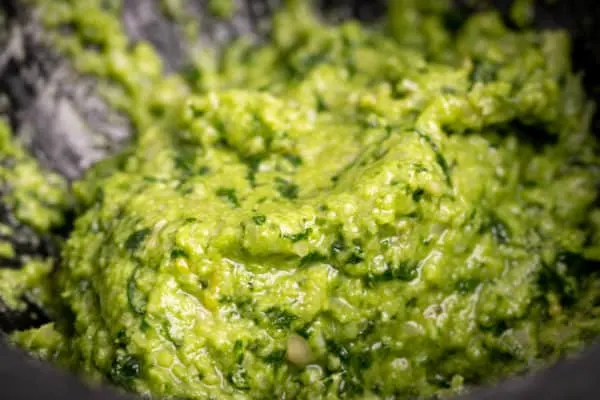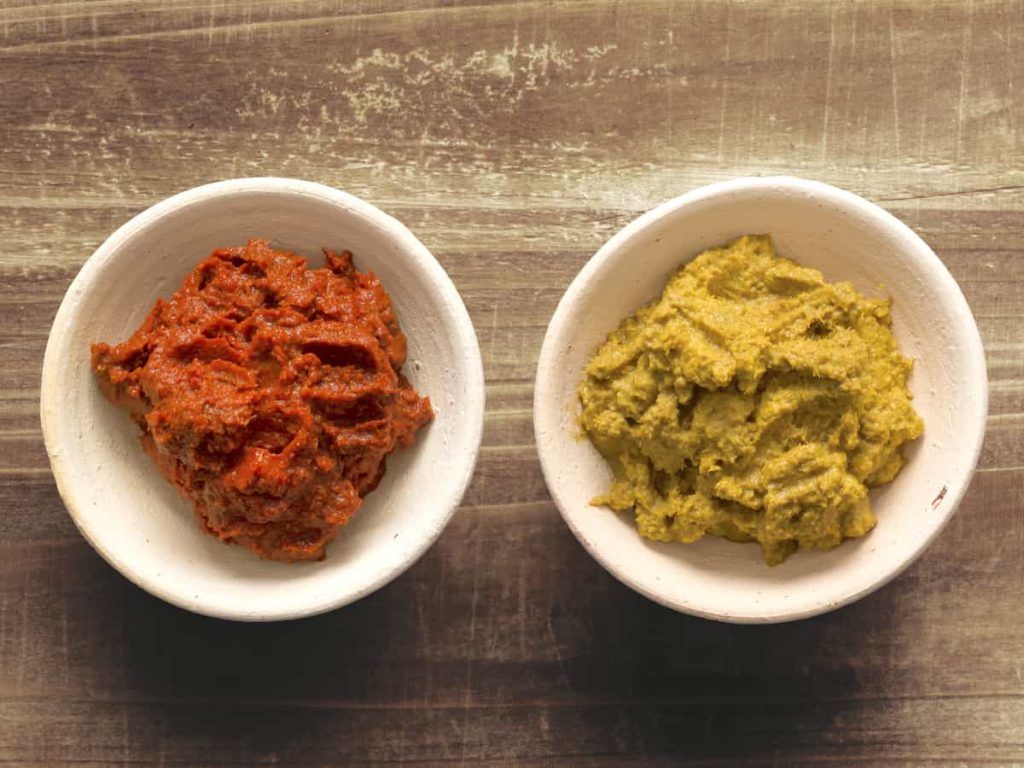Detailed Guide to Curry Paste | Uses, Types, Expiration Date, How to make one?

Curry paste is a versatile ingredient used in a variety of cuisines, including Thai, Indian, and Southeast Asian. It’s a blend of herbs, spices, and other seasonings that are ground together to create a paste-like consistency. Curry paste comes in different varieties, each with its own unique flavor and spice level.
Here’s a breakdown of some common types of curry paste:
Thai Red Curry Paste:
This paste is made from red chili peppers, lemongrass, garlic, and other spices. It has a medium to high level of spiciness and is commonly used in Thai cuisine.
Indian Curry Paste:
Indian curry paste is made from a blend of spices, including coriander, cumin, turmeric, and chili powder. It’s commonly used in Indian cuisine and can be mild or spicy depending on the recipe.
Green Curry Paste:
This paste is made from green chili peppers, garlic, and other spices. It has a medium to high level of spiciness and is commonly used in Thai cuisine.
Yellow Curry Paste:
Yellow curry paste is made from turmeric, cumin, coriander, and other spices. It has a mild to medium level of spiciness and is commonly used in Thai and Indian cuisine.

Now that you know a little about curry paste, let’s take a look at some frequently asked questions:
How long does curry paste last?
Curry paste is a popular ingredient used in many recipes, but it’s important to know how to properly store and use it. Typically, curry paste has a shelf life of 1-2 years, but it’s important to check the expiration date on the packaging before using it. Once opened, curry paste should be refrigerated and consumed within a few weeks to prevent spoilage. Signs that curry paste has gone bad include a sour smell, mold growth, or a change in texture or color. It’s important to discard any curry paste that has gone bad, as consuming spoiled food can lead to foodborne illness. By properly storing and using curry paste, you can ensure that your dishes are safe and delicious.
How do I store curry paste?
Once opened, curry paste should be stored in an airtight container in the refrigerator. It should be consumed within a few weeks to prevent spoilage. It’s important to check the packaging for any specific storage instructions, as some brands may have different recommendations. If you don’t plan to use the entire jar of curry paste within a few weeks, you can also freeze it for later use. To freeze curry paste, spoon it into an ice cube tray and freeze until solid. Once frozen, transfer the curry paste cubes to a zip-top freezer bag and store in the freezer for up to 3 months.
Can I freeze curry paste?
Yes, you can freeze curry paste for later use. To freeze curry paste, spoon it into an ice cube tray and freeze until solid. Once frozen, transfer the curry paste cubes to a zip-top freezer bag and store in the freezer for up to 3 months.
How do I use curry paste?
Curry paste can be used in a variety of ways, including as a marinade for meat, as a seasoning for vegetables, or as a base for curry sauce. To use curry paste, simply add it to your recipe and adjust the amount based on your desired level of spiciness.
Can I make my own curry paste?
Yes, you can make your own curry paste by blending together fresh herbs, spices, and other seasonings. Homemade curry paste can be customized to your taste preferences and can be made in larger batches and stored for later use.
In conclusion, curry paste is a versatile ingredient that can add flavor and spice to a variety of dishes. By understanding the different types of curry paste and how to properly store and use it, you can experiment with new recipes and create delicious meals at home.











